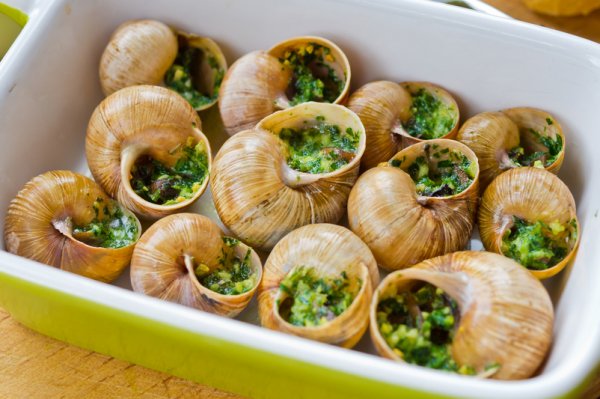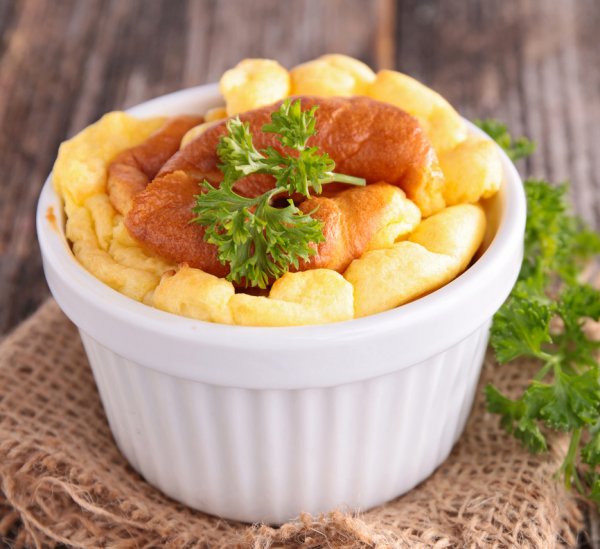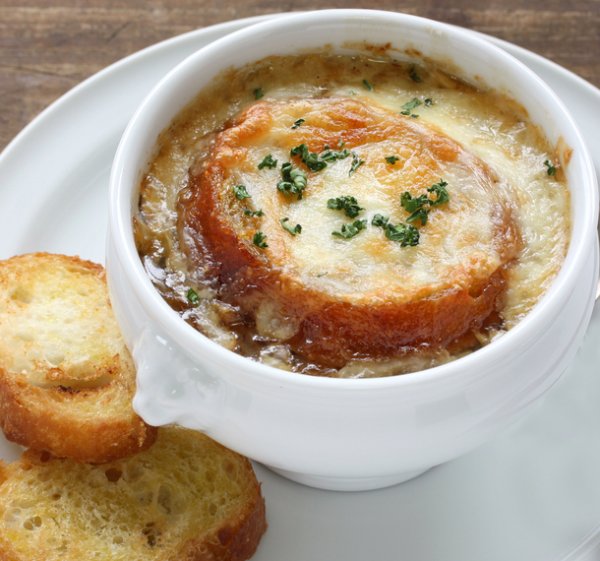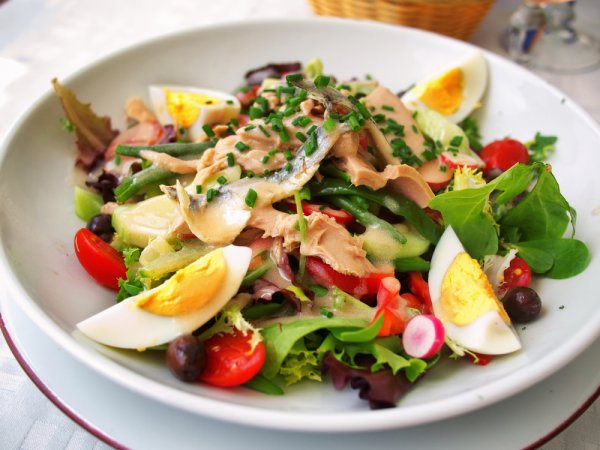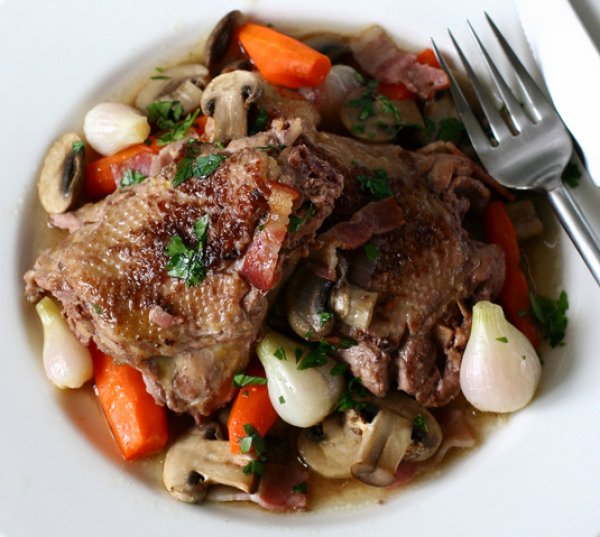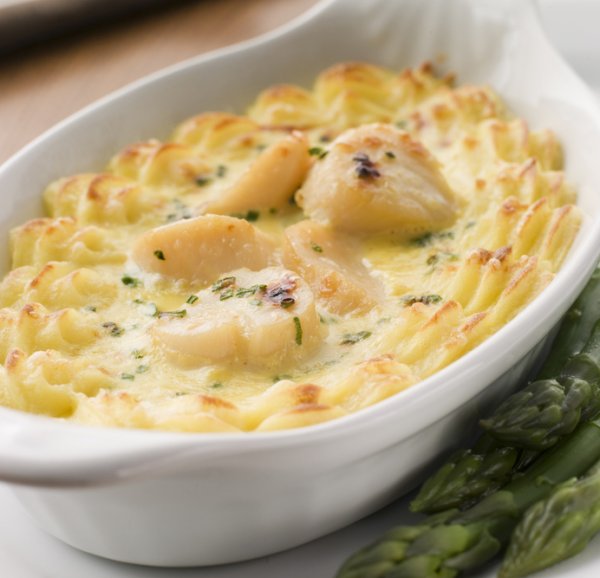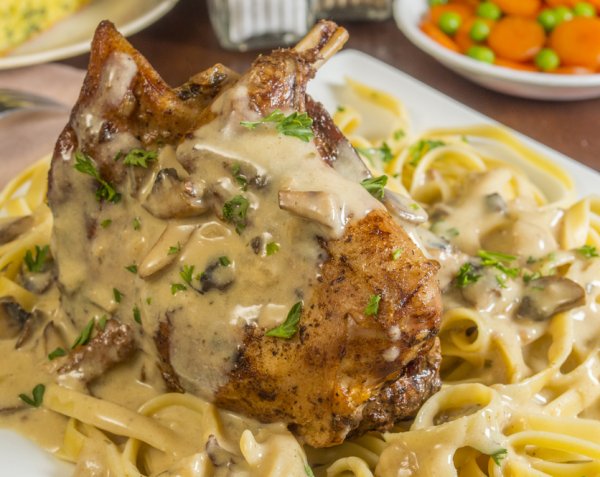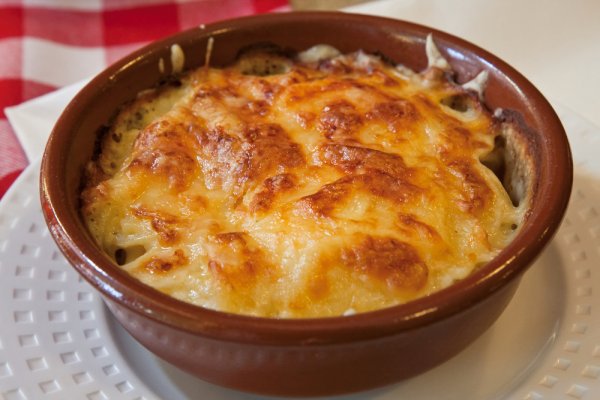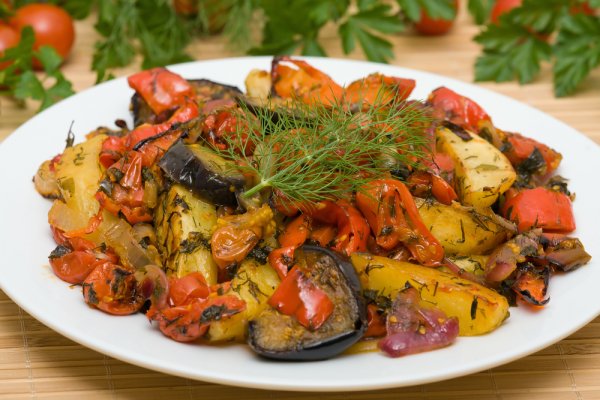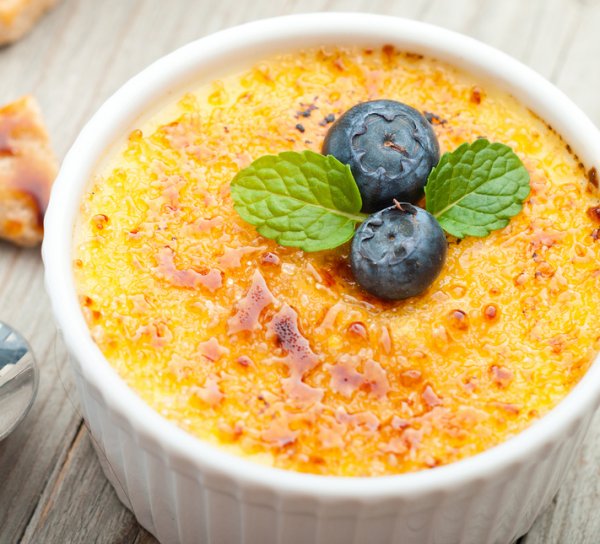Food and Drink: Classic Dishes
Listed below are a few of the many dishes associated with the cuisine of France. Recipes for these classic dishes and many others can be found in the Recipes section.
APPETIZERS
Cuisses de Grenouille – A well-known French appetizer or main course, frogs’ legs are usually simply prepared by being fried in butter, sometimes with a little onion, garlic, or herbs, and served hot with lemon.
Escargots à la Bourguignonne – Snails baked with generous amounts of garlic-parsley butter are a classic French appetizer.
Moelleux de Foie Gras– A creamy dish made from the liver of a specially force-fed goose or duck is a well-known French appetizer. It is a soft, light preparation, and usually includes eggs and cream with minimal seasoning. Mushroom sauce is the traditional garnish. Foie gras is a particular specialty of Périgord, but is produced in other areas of Western France and is consumed all over the country.
Pissaladière – A specialty of the Côte d’Azur, pissaladière is a thin pizza topped with onions caramelized in olive oil, black olives, and a few anchovies. It is served warm or cold as an appetizer, snack, and even as a light main course.
Soufflé au Fromage – Cheese soufflé is a béchamel sauce enriched with cheese and lightened with stiffly beaten egg whites, which give the soufflé its airy texture.
SOUPS
Bouillabaisse – A well-known mixed fish soup from Marseille, common throughout the south of France, especially in Provence. This soup is normally flavored with fennel, orange peel, and saffron.
Soupe à l’Oignon – French onion soup is a typical cold-weather soup, possibly of Alpine origin but common throughout the country. Slowly cooked onions are simmered with beef stock and red wine, then topped with garlic toast and cheese.
Vichyssoise – A leek, cream, and potato soup, normally served cold.
SALADS
Céléri Rémoulade – Blanched, julienned celery root chilled and dressed with a thin mayonnaise sauce flavored with chopped cucumber pickle, anchovy, parsley, chervil, tarragon, and chive. This salad is common throughout France. Rémoulade sauce is also used to dress cold meats.
Salade Landaise – Typical of southwestern France, salade landaise is normally served as a main course. It includes mixed leafy greens and duck meat, including the heart, specially cooked gizzards, duck magret, and sometimes foie gras. It usually includes tomato and onion, pine nuts, and sometimes prunes, all dressed with vinaigrette.
Salade Niçoise – French-style tuna salad is made with vegetables, olives, hard-boiled eggs, vinaigrette, and usually anchovies. It is typical of southeastern France, particularly the coastal area, but is known and consumed throughout the country.
MAIN DISHES
Blanquette de Veau – Veal stew served in a sauce enriched with cream and flavored with clove and lemon is an embedded part of French home cooking, and is consumed almost throughout the country. The stew normally includes vegetables such as onions, carrots, leeks, and celery, and traditionally includes mushrooms sautéed separately and added to the stew before serving.
Boeuf Bourguignon – This classic dish is similar to coq au vin in the ingredients and preparation techniques. Beef is marinated in red wine and aromatic herbs, then browned and stewed in wine. Peppercorns are normally added to the wine marinade, and a large, chopped onion is used rather than the pearl onions traditional in coq au vin. Boeuf Bourguignon is traditionally served with parsley potatoes.
Cassoulet – Originally from the Languedoc region, cassoulet is a dish based on white beans simmered with pork for flavoring and garnished with other cooked meats. Pork, including ham, sausage, and other cuts, is always used, and preserved goose is a classic addition. Mature lamb, partridge, and duck are also possible inclusions, depending on the exact region.
Coq au Vin – Chicken in wine sauce is an extremely common French main course. The most well-known version is flavored with bacon, onion, and red wine, and garnished with mushrooms sautéed separately.
Coquilles St. Jacques – Scallops are first poached, then covered in a subtly flavored cream sauce and broiled for this popular dish.
Gigot d'Agneau Rôti – Roast leg of lamb is a standard home-cooked meal for family celebrations. Small slits are cut all over the leg of lamb and filled with garlic. French roast lamb is normally cooked rare and served with vegetables and beans, particularly flageolets, though the type of bean varies by region and preference.
Lapin à la Moutarde – Rabbit is traditionally a popular French meat, and though it is less common today, it is still a French classic, particularly when prepared with mustard sauce. This recipe is usually made by baking or pan-searing mustard-coated rabbit, then deglazing the pan with white wine and adding cream to form a sauce. The dish is usually served with plain noodles.
Quiche Lorraine – A bacon, egg, and cheese tart common in northeastern France, normally served with green salad as a light main course.
SIDE DISHES
Gratin Dauphinois – Potato gratins are a staple of everyday French cookery, and dauphinois is perhaps the most well-known example. It is a simple but rich dish of sliced potatoes baked in cream and seasoned with salt, pepper, and garlic. It is served with roast or grilled meat or poultry.
Piperade Basquaise – A Basque dish, piperade is composed of sweet peppers and tomatoes traditionally cooked very slowly in goose fat, usually with onion and garlic. Today it is more commonly cooked in oil then baked. It is an accompaniment for poached eggs as well as an ingredient in scrambled eggs and egg tarts.
Ratatouille – Originally from Nice, this vegetable dish is now popular all over southeastern France. It normally includes eggplant, zucchini, tomatoes, peppers, onions, and garlic. Some recipes stipulate that each ingredient be cooked separately to ensure that all the vegetables are equally cooked, but most modern cooks simmer the ingredients together. Ratatouille is usually an accompaniment for roast meat; is also served alongside chicken, fish, and egg dishes; and sometimes appears as an appetizer served with bread.
Tartiflette – A Savoyard dish typical of Alpine cooking, tartiflette is sliced potatoes baked with cheese, onion, and bacon. It is very rich and may be served on its own with salad as a full meal, though it is also a side dish with meat.
DESSERTS
Clafoutis – Fresh fruit, often cherries, prune plums, figs, or apricots, covered with an egg batter and baked, is a popular homemade dessert.
Crème Brûlée – Myriad versions of this classic dessert now exist, but the original is a baked cream and egg yolk custard flavored with a vanilla bean, then topped with sugar and broiled until the sugar caramelizes.
Mousse au Chocolat – The traditional French chocolate mousse is made with dark chocolate and eggs. Cream is not part of the traditional preparation, though mousse is often served with a little lightly sweetened vanilla-flavored whipped cream, commonly called chantilly.
Pot de Crème – This classic French dessert is a chilled custard made with a mixture of heavy cream, milk, eggs, and chocolate or vanilla, strained and baked in a water bath.
Tarte Tatin – A caramelized apple tart cooked on both sides, this dish originated in central France and was made popular by local hotelliers. It is now a popular autumn dessert through most of the country.
BEVERAGES
Coffee – Coffee with milk is an almost standard part of the French breakfast, and petit café, or small cups of strong coffee, are usual after-meal drinks. Coffee in various forms is also consumed throughout the day and when socializing.
Wine – Traditionally considered a necessity with meals, French wine is normally the standard by which wines from other countries are judged. Regional products abound, and wines specifically intended to be drunk before meals or with desserts are well known.
HOLIDAY FAVORITES
Bûche de Noël – The French Christmas log is an almost mandatory Christmas dessert. The traditional version is a vanilla cake rolled and iced with chocolate, then brushed to simulate tree bark, but today bûche de Noël comes in almost every flavor imaginable.
Copyright © 1993—2024 World Trade Press. All rights reserved.

 France
France 
